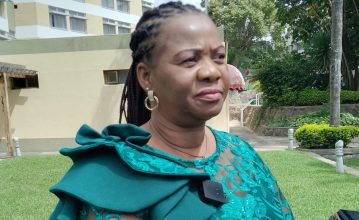IPPS can only feed 70mw into power grid
While government has been engaging Independent Power Producers (IPPs) to produce power to feed into national grid to increase electricity supply, results of the grid capacity study show that the grid can only accommodate up to 70 megawatts (MW) generated from other sources.
Government has, so far, signed 38 memoranda of understanding (MoUs) with IPPs out of which 17 have been shortlisted to produce power.
This means that if all the IPPs were to do the work at once, each one of them will only be able to produce four megawatts.
Deputy director in the department of energy affair Joseph Kalowekamo in an interview last week confirmed the study results, saying only four out of the 17 IPPs will be picked after a tendering process.

He said the ministry requested Electricity Supply Corporation of Malawi (Escom) to proceed with the procurement of IPPs through a tendering process which was advertised in the press mid December.
But when asked on the progress of the tendering process, Escom public relations manager Kitty Chingota asked for more time before she could provide details.
Escom is currently struggling to produce power to meet the demand of companies and households.
Meanwhile, the parastatal has been split into two: Electricity Generation Company (Malawi) Limited (Egenco) and Escom Residual Limited.
Currently, the water flow in the Shire River, which is Escom’s main source of hydropower generation only allows it to produce up to 200MW against a maximum generation capacity of 351.75MW topped up by a 10MWdiesel-powered plant installed in Lilongwe. Currently, Escom is load shedding up to 140MW
Grain Malunga, former minister of Natural Resources, Energy and Mining on Tuesday said the country may not be ready at the moment to accommodate IPPs, but was quick to mention that it is good to plan for the future.
“We have the potential in the future. It seems we are short-lived in terms of our planning. What we need to do is to look even 50 years beyond because this gives us an actual way in terms of what is ahead of us,” he said.
Electricity generation in Malawi is currently inadequate to the greater part of the population with figures showing that less than 10 percent of the country’s population has access to electricity.
The unbundling of Escom is part of the power sector reform project, a component of the $350.7 million ( about K242 billion) United States of America (USA) government-funded Millennium Challenge Corporation (MCC) energy compact that seeks to improve the country’s power generation and distribution infrastructure.
Millennium Challenge Account-Malawi (MCA-M), local implementing agency of the energy compact, is rehabilitating Nkula A hydroelectric power plant which was commissioned in 1966 with an installed capacity of 24MW.
When completed, the economic life of the plant will be restored for another 30 to 40 years with capacity increased to 36MW.
In addition to that, the MCA-M is constructing two key 400/132kV substations at Phombeya in Balaka and Nkhoma and another 132/66kV at Bunda turn- off in Lilongwe, Chintheche, Luwinga and New Bwengu substation in the North as part of the transmission and distribution network upgrade to power generation by extra 400MW to 500MW from the current 70MW.
Other than that, plans are also underway to increase electricity generation to 2 550MW by 2030. n





